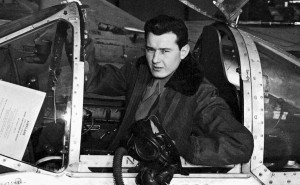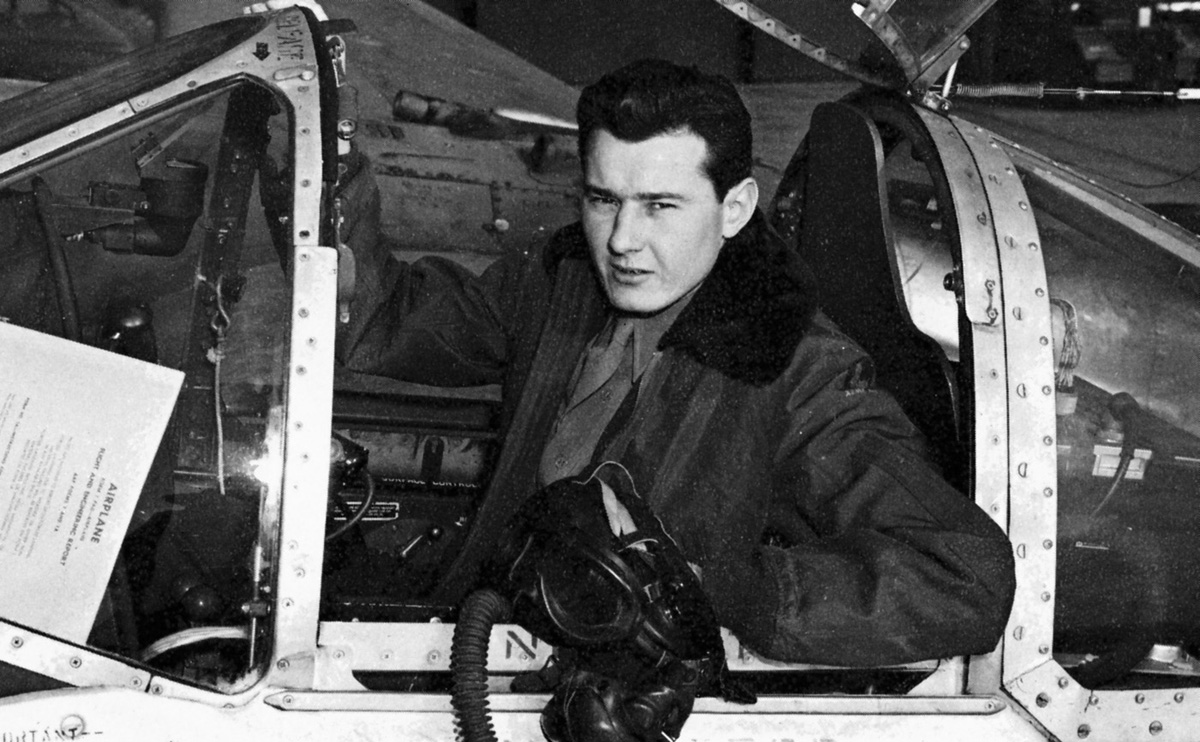Featured in 2007
 On Jan. 24, 1944, Bob Hoover’s 22nd birthday, he lost his roommate and best friend. After being shot down near the coast of Calvi, Corsica, Tom Watts had successfully bailed out of his Spitfire. But high winds dragged his parachute into a reef of rocks offshore, and he drowned. It wasn’t the first fatality for his band of men, but it hit Hoover the hardest.
On Jan. 24, 1944, Bob Hoover’s 22nd birthday, he lost his roommate and best friend. After being shot down near the coast of Calvi, Corsica, Tom Watts had successfully bailed out of his Spitfire. But high winds dragged his parachute into a reef of rocks offshore, and he drowned. It wasn’t the first fatality for his band of men, but it hit Hoover the hardest.
A little over two weeks later, on Feb. 9, 1944, Hoover, who had been promoted to flight leader, took off from Calvi. He was heading a four-plane-formation of Spitfires on a mission to patrol the waters off the Italian and French coasts, between Cannes and Genoa.
Hoover was flying Black 3, a Supermarine Spitfire Mk. Vc, on a harassment mission to search and destroy enemy ships and trains. After Hoover and his fellow pilots had successfully destroyed a German freighter in the harbor near Savona, Italy, they flew back to base to refuel and then returned to patrol.
When Hoover caught sight of four German Focke-Wulf 190s, he called out their position. One of the FW-190s was on the tail of James “Monty” Montgomery, a friend who had been shot down a few months earlier and had spent three days in a life raft before being rescued. Hoover frantically called for Montgomery to break left to avoid gunfire. He knew he would need all the speed he could get, so he had to get rid of his aircraft’s external fuel tank.
“That’s high drag,” he said. “It really slows the airplane down. I had only 1,100 horsepower and was capable of doing only 215 mph. The airplanes I had engaged had capability of 350 mph. It’s like racing a Model T Ford with a Cadillac.”
But when Hoover pulled the handle that would release the external fuel tank, the handle came off in his hand. With the Spitfire’s superior turning ability now his only defense, he headed straight for a German fighter. He spat out a burst of .50 caliber gunfire and then saw billows of smoke streaming through the sky.
He had his first kill of the war, but had no time to celebrate. Montgomery had been hit, and Hoover watched his aircraft burst into flames. Now, two FW-190s were after Hoover. As he dove left, he noticed that his two friends had veered off and left him to fend for himself.
Not being able to release the external fuel tank seemed unlucky at the time, but now it made Hoover’s Spitfire so slow that the F-190s overshot him. When two more enemy aircraft turned in toward him, Hoover fired and hit one of the FW-190s. Just when he thought he might escape, shells hit his engine cowling from underneath. An enemy fighter had hit him with a high-angle deflection shot.
“I saw this airplane, 90 degrees out here, and I just ignored it,” Hoover recalled. “How could you ever get an angle shot like that?”
Hoover felt severe pain shoot through his lower body as another FW-190 closed in on him. The enemy pilot must’ve thought Hoover had no firepower, because he swooped under Hoover and pulled up in front of his nose. Hoover shot a burst of gunfire, but seconds later, the Spitfire’s engine exploded, and a ball of flames engulfed the aircraft’s nose.
“I called and told the British controller, ‘I’m going down at sea, so alert the Dumbos (Walrus amphibian rescue planes) to start flying,'” he recalled.
He opened the cockpit, released his shoulder and seat straps, rolled the plane and pulled his parachute’s ripcord. The parachute didn’t open until three or four hundred feet above the water. His life vest, riddled with shrapnel, wouldn’t inflate, and when he hit the cold water, he felt immense pain in his lower body.
As he floated in the icy water, about 20 miles off the coast of Nice, France, he saw four Spitfires approach. When a group of FW-190s swooped down on them, one Spitfire was shot down and the others turned away. After four hours in the water, Hoover was picked up by a German corvette.











